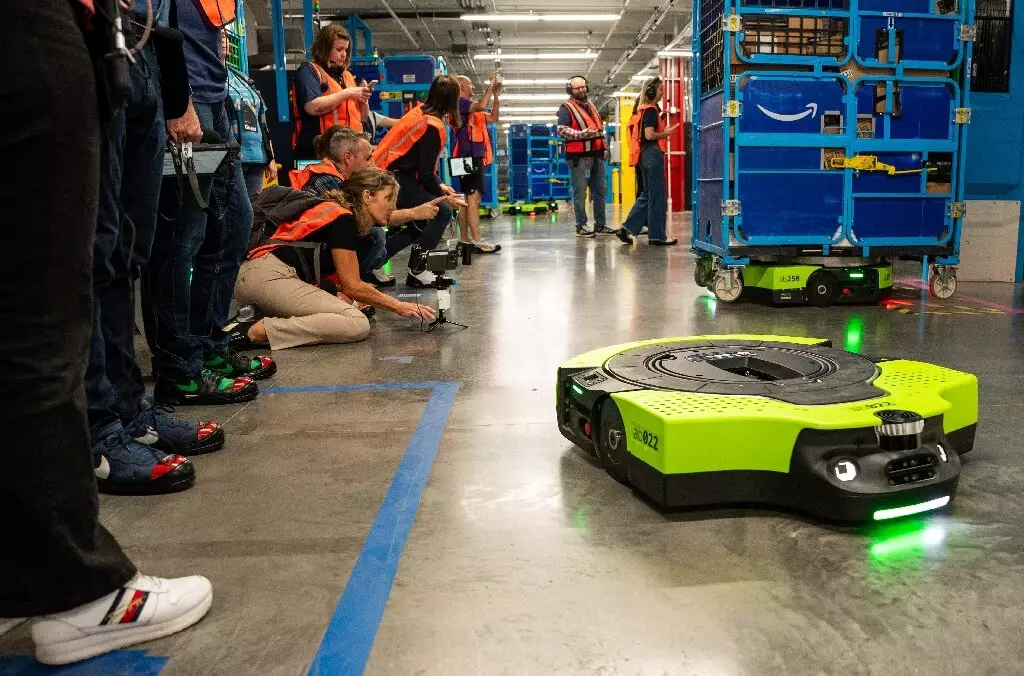In the contemporary landscape of e-commerce, few companies have made as indelible a mark as Amazon. The Seattle-based behemoth is not just a retailer; it’s a multifaceted empire that continues to extend its roots into various sectors of daily life, including healthcare, entertainment, and logistics. Recent developments underscore Amazon’s commitment to innovation and efficiency, but they also raise pertinent questions regarding competition and market dominance.
One of Amazon’s latest technological advancements is the introduction of a sophisticated computer system for delivery vans that aims to optimize the logistics process. This system allows delivery vehicles to automatically recognize their stops and determine the exact packages to drop off. Amazon Stores’ head, Doug Herrington, claims that enhancing delivery speed directly correlates with increased shopping activity among customers. “When we speed up deliveries, customers shop more,” he stated confidently, and with plans to offer unprecedented Prime delivery speeds globally in 2024, the company is clearly banking on this hypothesis.
The efficiency of Amazon’s delivery process was also highlighted by the significant reduction in shipping costs, reporting a drop of 45 cents per unit shipped—an impressive feat given the scale of their operations. In the context of a booming online retail market that yielded over $30 billion in profit from $575 billion in revenue last year, these developments reinforce the flywheel model that keeps Amazon’s myriad services interconnected.
Analysts like Suzy Davidkhanian emphasize that the core of Amazon’s strategy revolves around its Prime membership, which serves as a linchpin for various business arms, such as retail, advertising, and cloud computing. However, these expansions have led to scrutiny from the government; a lawsuit alleging that Amazon has cultivated an illegal monopoly highlights the fierce competition it faces in the marketplace. Additionally, the integration and utilization of consumer data to enhance targeted advertising and product insights have solidified Amazon’s stronghold, further complicating the ethical landscape of its operations.
A prime example of this strategy is Amazon’s decision to invest heavily in streaming rights for NFL games. This move not only capitalizes on the immense popularity of football but also equips Amazon with insights about fan demographics, thereby sharpening its marketing prowess.
Diving into Healthcare
In an ambitious leap into the healthcare sector, Amazon has unveiled enhancements to its virtual health service, One Medical. For a monthly fee of $9, Prime members gain access to video consultations and prescription services. Amazon Pharmacy aims to leverage its vast delivery network to ensure that prescriptions are delivered swiftly, with a target to reach nearly half of customers within a day by the close of next year. This strategic foray into healthcare aligns with Amazon’s overarching goal of becoming an all-encompassing platform catering to diverse consumer needs.
Hannah McClellan, head of Amazon Pharmacy, articulated this vision by stating, “We’re building a pharmacy in your pocket that offers rapid delivery right to your door.” As healthcare remains a lucrative growth area, Amazon’s multi-dimensional approach positions it well to influence personal health management in innovative ways.
As Amazon continues to enhance its supply chain operations, the integration of artificial intelligence and robotics is transforming the logistics experience. A new automated micro-warehouse in Pennsylvania signifies a shift towards a more tech-driven shopping environment, where customers can order online and pick up their selections in-person at affiliated Whole Foods locations.
AI-driven systems help personalize shopping experiences by adjusting product descriptions in real-time to cater to individual preferences. This level of customization aims to facilitate a quicker transition from product discovery to purchase, further capitalizing on consumer interest.
Yet, the deployment of highly automated systems has not been without controversy. Critics argue that the pressure for rapid delivery often makes Amazon’s work environment perilous, with injury rates surpassing industry averages. This duality highlights the tension between efficiency and employee welfare, a critical element of Amazon’s ongoing narrative.
As Amazon forges ahead, its towering presence in e-commerce expands into realms beyond traditional retail. Each innovation—whether in logistics, healthcare, or artificial intelligence—positions the company to address consumer demands comprehensively. However, as the company is scrutinized for its business practices and alleged monopolistic tendencies, the larger question remains: can Amazon maintain its growth while navigating the complexities of competition and ethical implications? The coming years will be telling as it attempts to strike a balance between expansion and responsibility.


Leave a Reply